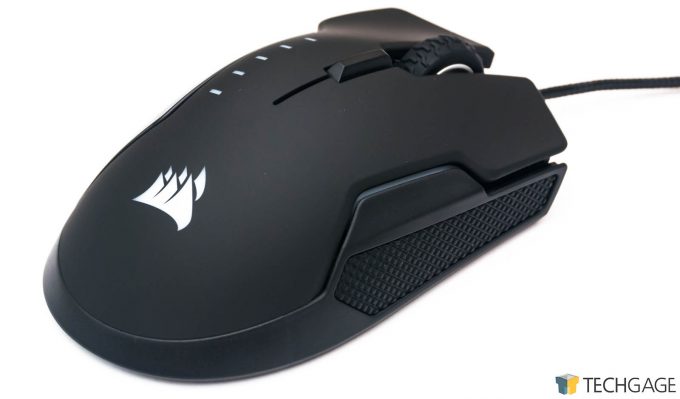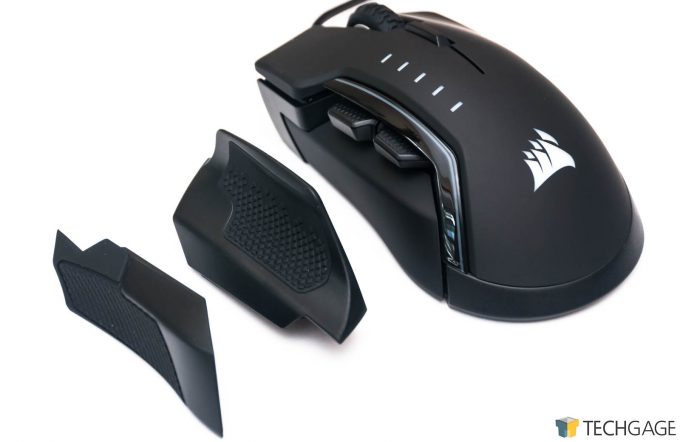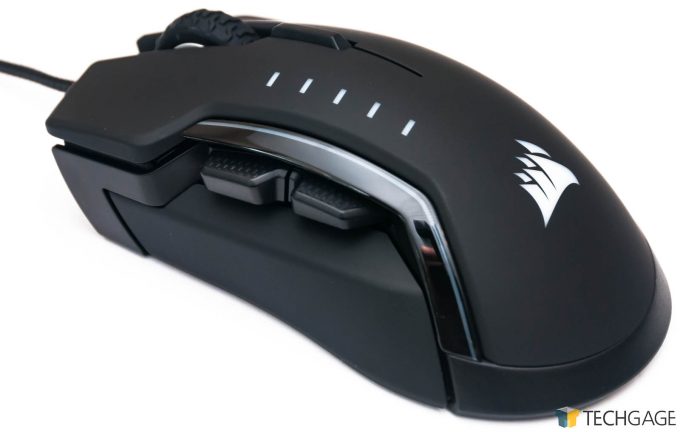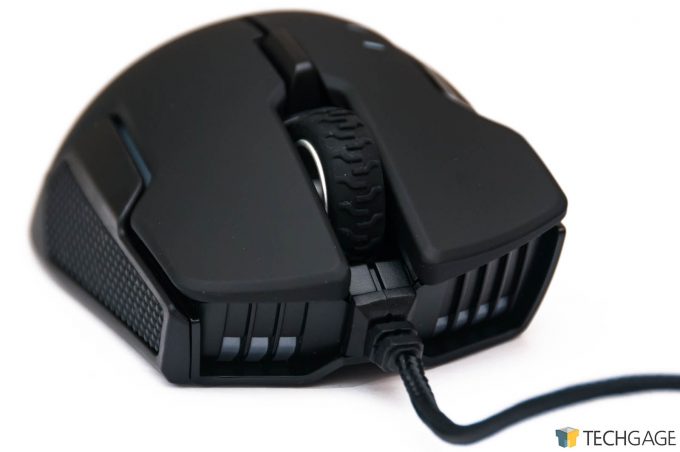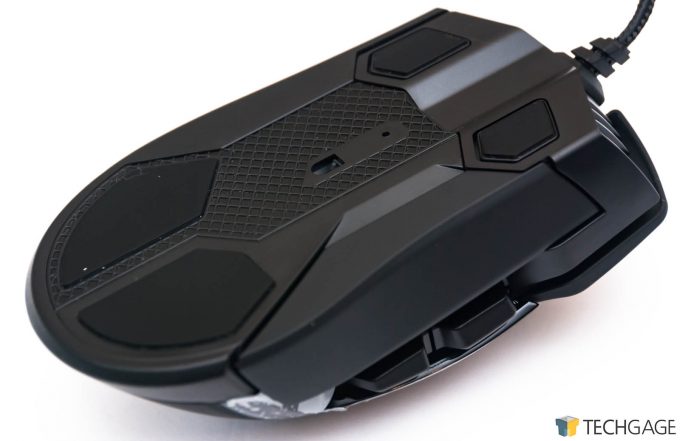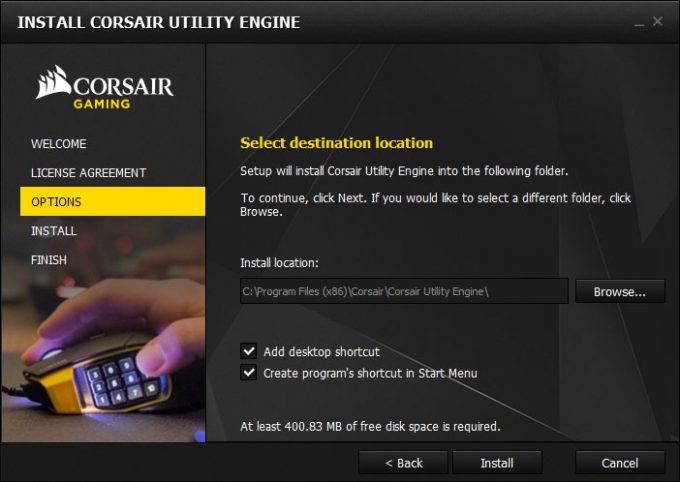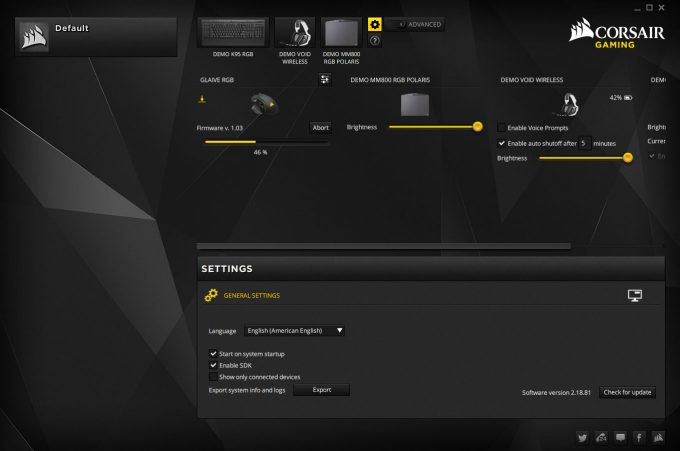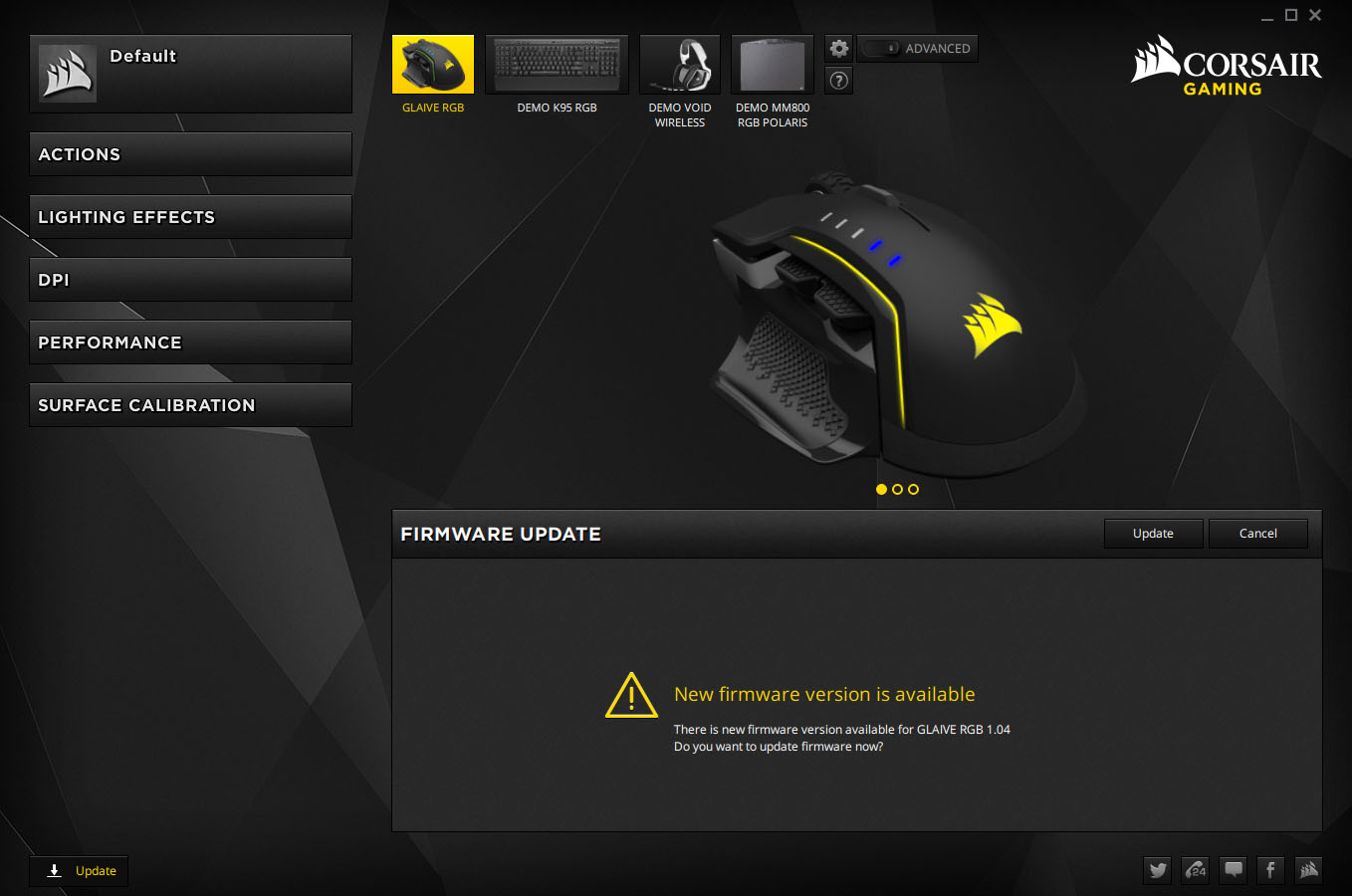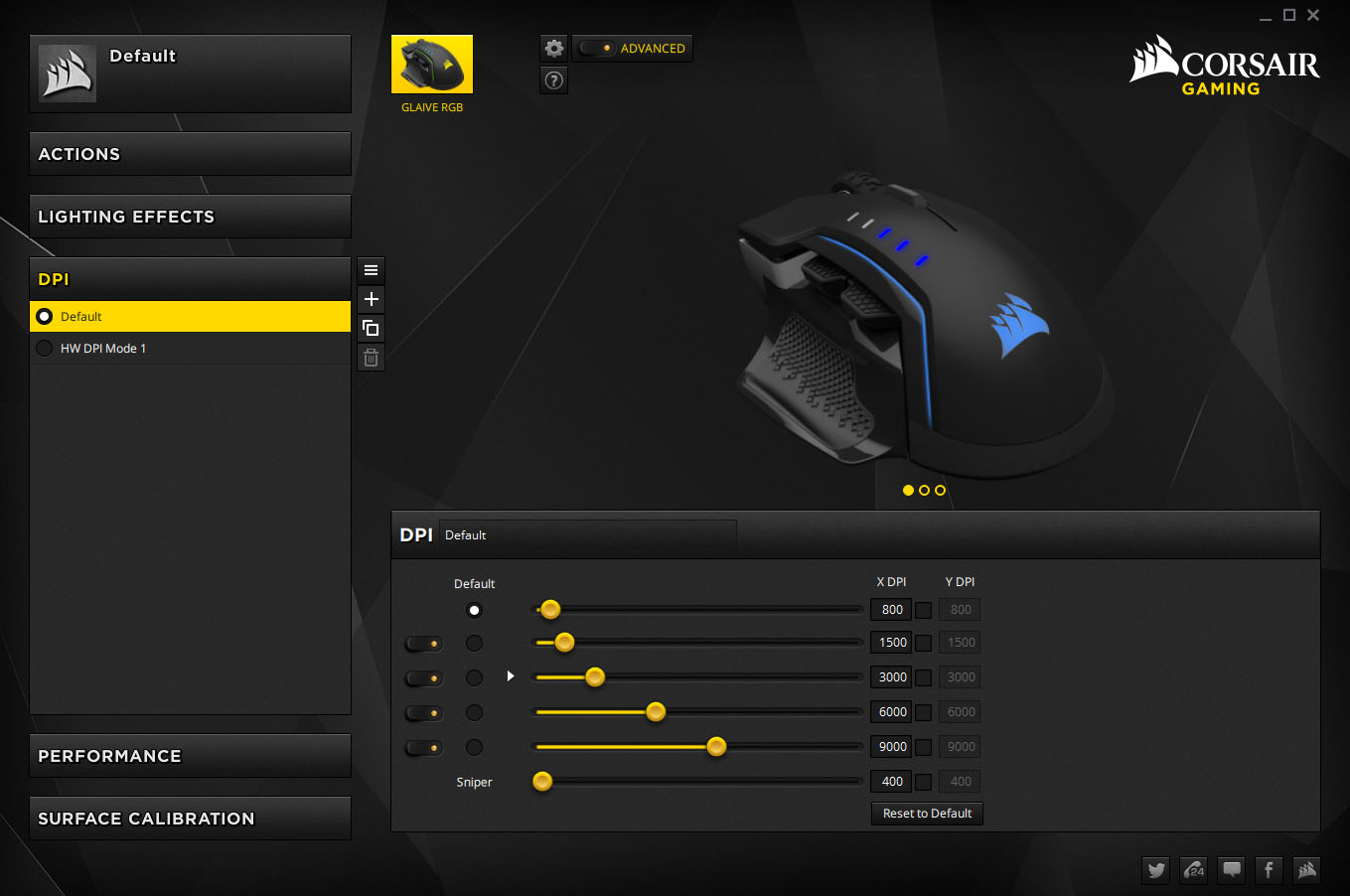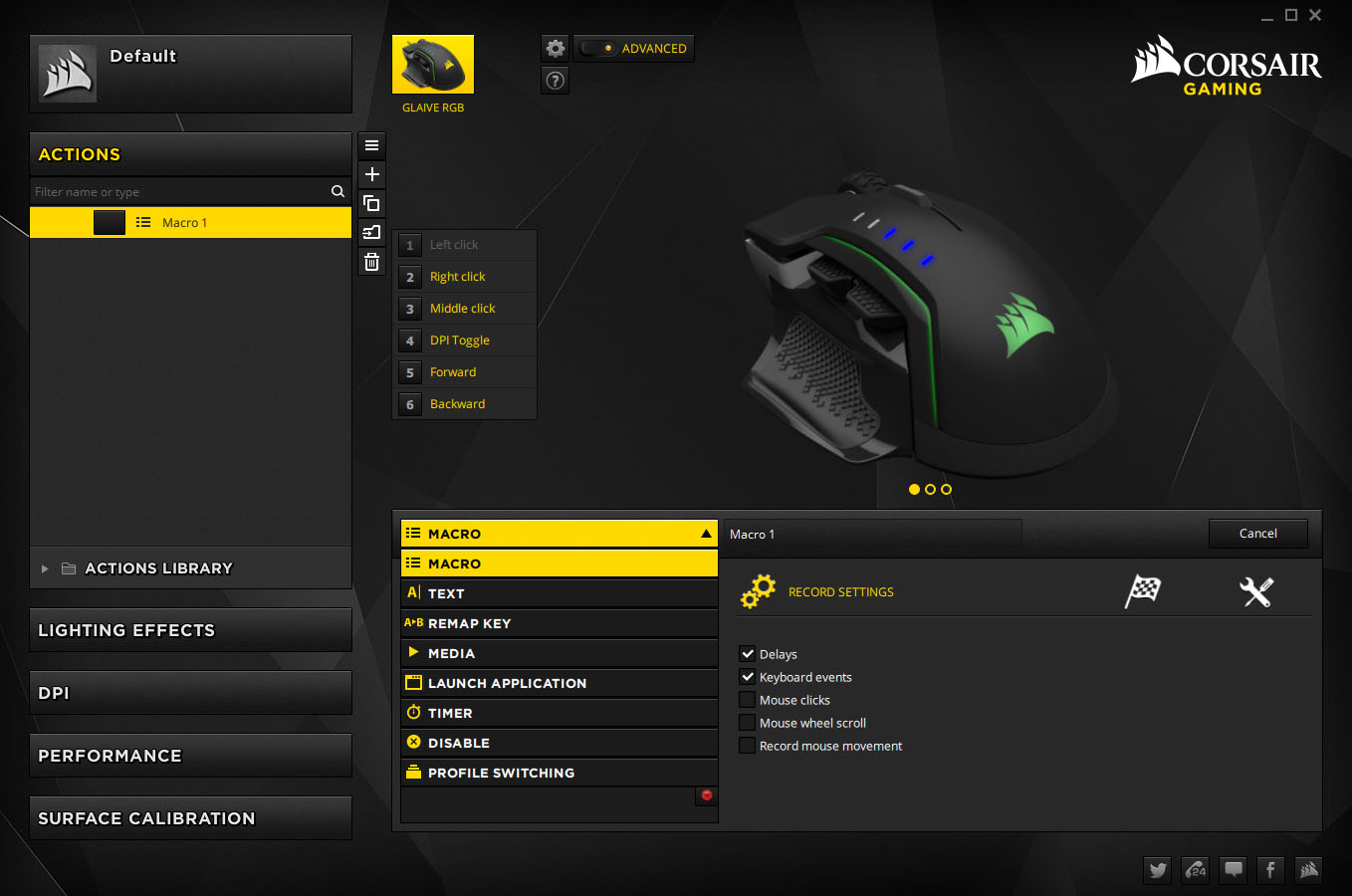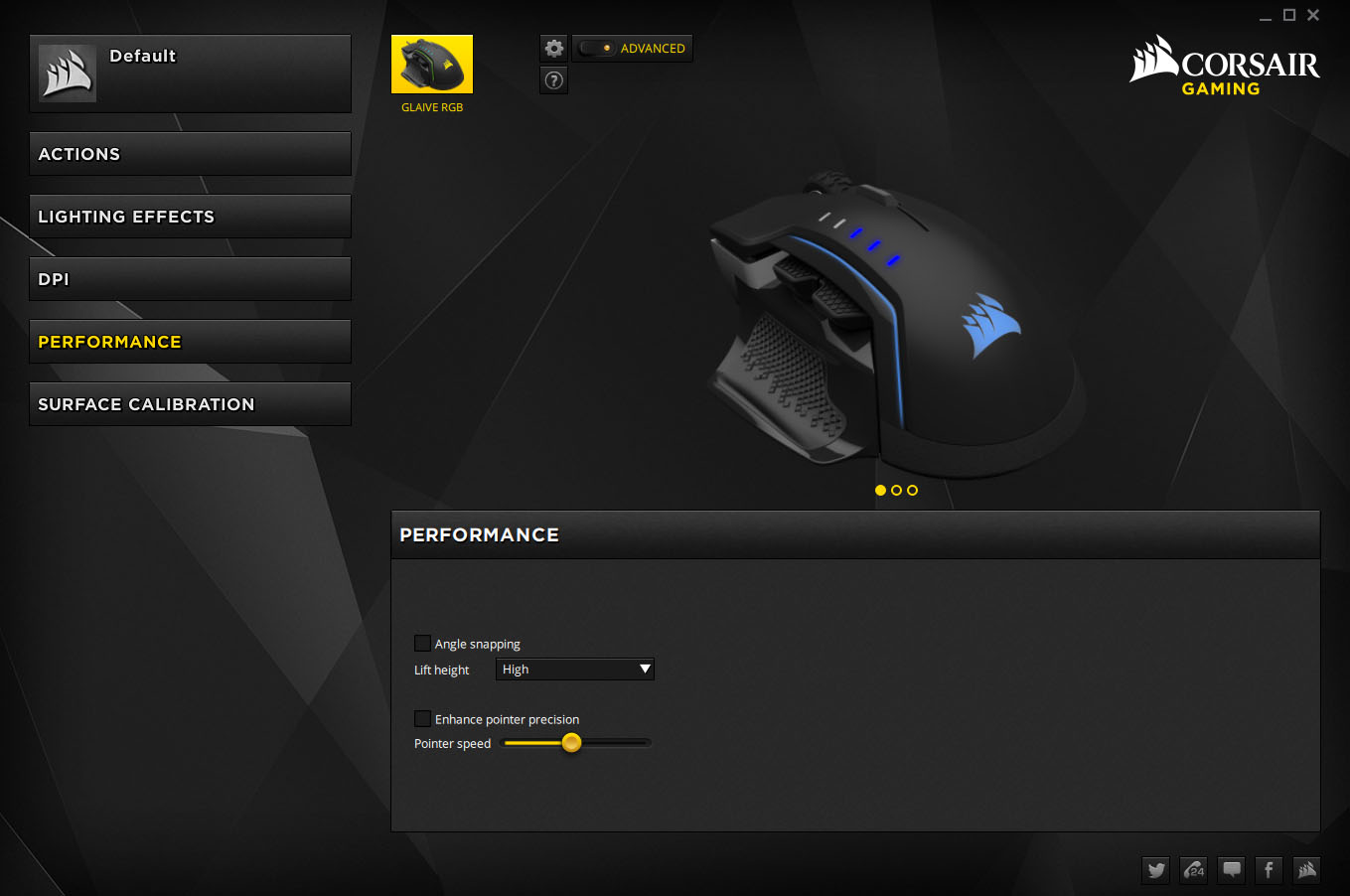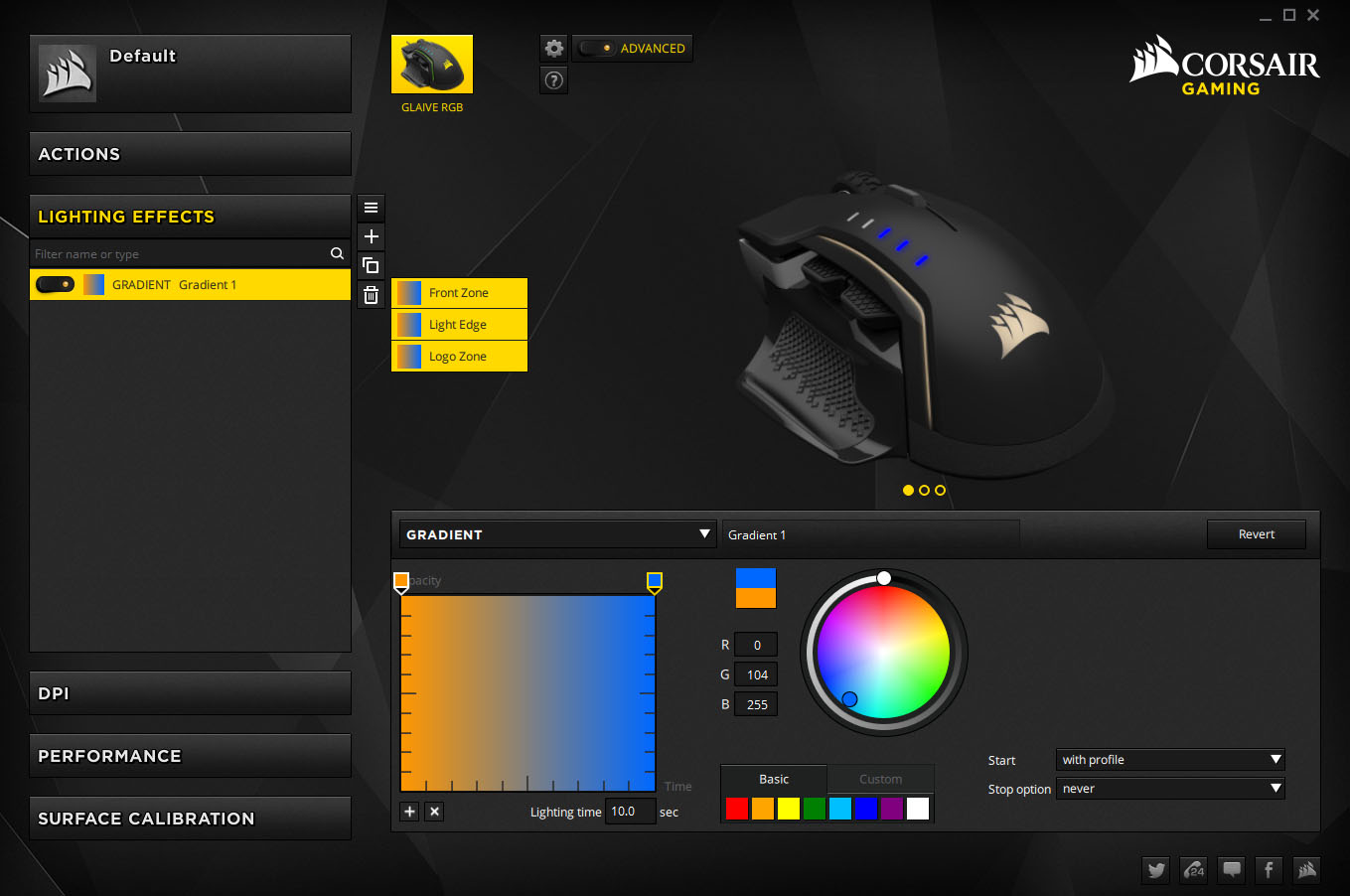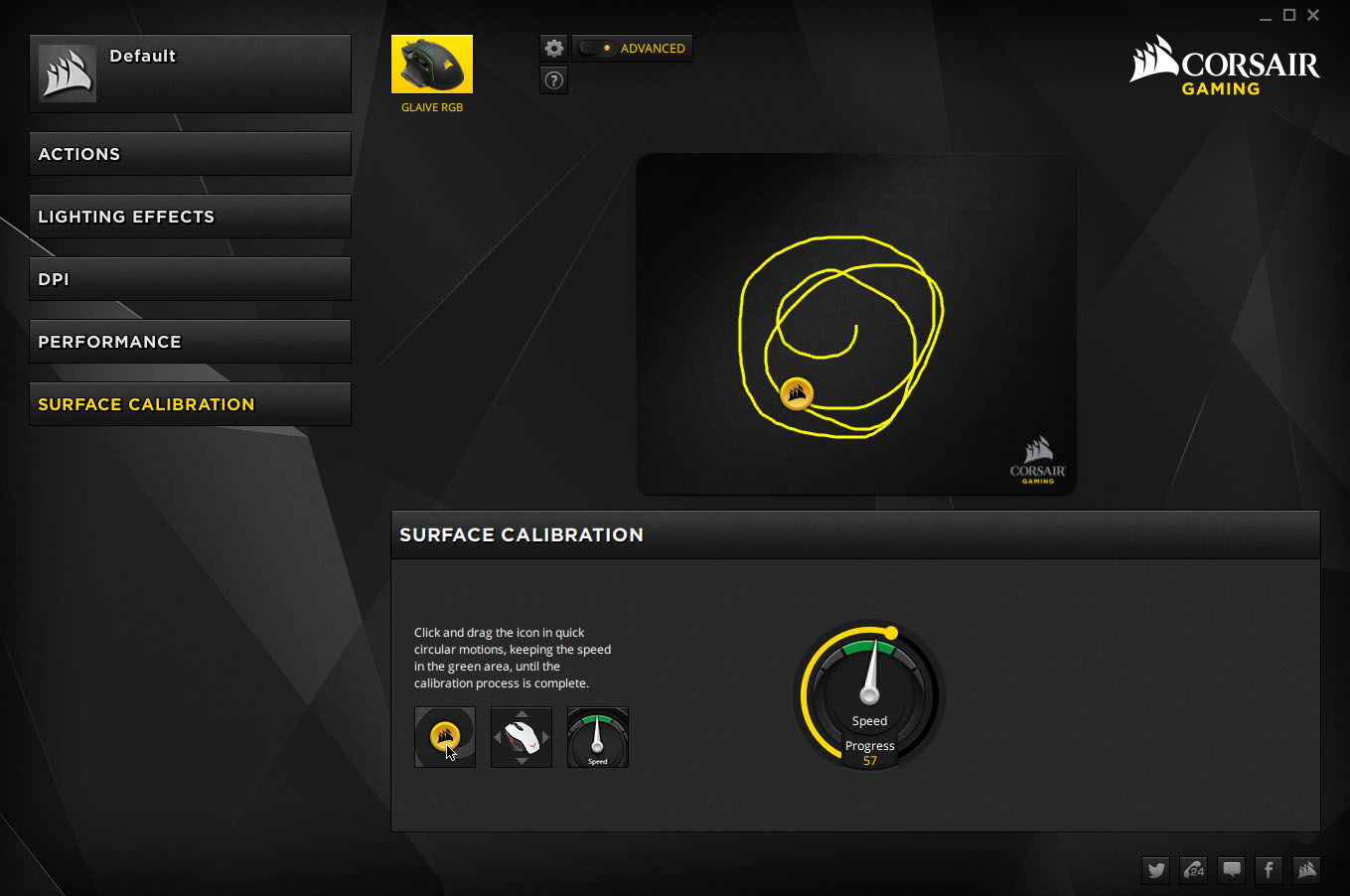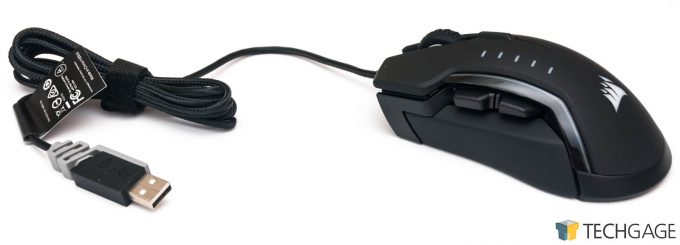- Qualcomm Launches Snapdragon 4 Gen 2 Mobile Platform
- AMD Launches Ryzen PRO 7000 Series Mobile & Desktop Platform
- Intel Launches Sleek Single-Slot Arc Pro A60 Workstation Graphics Card
- NVIDIA Announces Latest Ada Lovelace Additions: GeForce RTX 4060 Ti & RTX 4060
- Maxon Redshift With AMD Radeon GPU Rendering Support Now Available
Fits Like A Glaive: A Look At Corsair’s GLAIVE RGB Gaming Mouse

On the surface, Corsair’s GLAIVE gaming mouse looks modest, but wrapped around it is quite a bit of potential. Inside the box, three different thumb rests are included. Under the hood, PixArt’s PMW3360 handles the optical sensor duties, and inside the software, much RGB and performance configuration await. Let’s check it out.
As someone who generally doesn’t go out of their way to take a look at peripherals, I’ve been on a bit of a tear these past few months in search for a gaming mouse that I could call my own – one that feels like it was made for me. Well, I’m still not sure I’ve found that to the point I’d like to, but the two mice I’ve looked at previously, and also this third look, of Corsair’s GLAIVE, paint a good picture of what’s available today for $50-$70.
In July, I took HyperX’s Pulsefire for a spin, and found it to be a great mouse for those who like as “no-nonsense” a mouse as possible. The Pulsefire doesn’t even include software, which may make it all the more tempting to some. In August, I moved onto Patriot’s $50 Viper V570, a mouse that genuinely surprised me. Unlike the Pulsefire, the Viper V570 was made for those who love features, and perhaps bling, as well.
So, where’s a mouse like Corsair’s GLAIVE fit into the big picture? Priced at $70, it’s a bit more of a premium offering over the other two, though Corsair has a few tricks up its sleeves to justify the price.
The sensor found under the hood of the GLAIVE is the well-respected PixArt PMW3360, which supports DPI resolutions between 100 – 16,000. The mouse sports 6 buttons total, large PTFE feet for smooth movement, and in typical Corsair fashion, a number of configurable RGB LEDs. Let’s dig deeper.
A Look At The Corsair GLAIVE’s Hardware
One of the most notable features of GLAIVE is that it allows you to swap out the thumb rest for another, to either better suit your tastes, or improve your game. One could easily brush off the notion that a thumb rest could make a big difference, but having used these three options, I’ve definitely found myself more glued to one than the others (the middle one in the shot below; note that it’s not oriented correctly with how it’d snap into place).
Despite all of the different mice I’ve used, I find it a constant battle to dial in my DPI setting to a “perfect” level for my personal usage. I am not sure when I’ll find something close to perfect, but I did find a notable difference in my accuracy between these thumb rests, with the one I settled on allowing me to grip the mouse differently to increase my precision. This isn’t even just important in gaming – it’s made a difference for desktop use, too.
Due to the nature of the kind of work I do, especially with regards to benchmarking and compiling the results, I have to click around an awful lot, and when my settings are not properly dialed in, I (way too) often misclick. It’s not only the thumb rest that helped improve that situation with the GLAIVE, but also the ‘Surface Calibration’ section in the CUE software (which I’ll touch on in a bit).
As you’ve probably been able to tell from the product shots so far, the GLAIVE has a pretty standard fare button layout, with two thumb buttons found on the left side, and a DPI switcher found up top. To the left of the latter button are 5 LED notifiers, telling you which DPI mode you’re currently using. Another model GLAIVE substitutes part of the mouse’s chassis with aluminum, a nice aesthetic touch considering it doesn’t affect the $70 price tag.
The GLAIVE includes three RGB zones: the Corsair logo, outline around the top surface, and also the front, seen below. These zones can be configured independently, or kept the same for simplicity’s sake (or your taste’s sake). You can also rotate different colors, which is what I ultimately did (blue and orange, similar to Techgage‘s colors).
It’s worth drawing attention to the scroll wheel in the shot above, as it looks much more rugged than most. In testing, I actually found it to be more rugged in that it took a fair bit of pressure to click it in – more so than other mice, but not a problem unless you use that button religiously. The upside of a stiffer button means that you’re less likely to press it in the heat of battle, but conversely, you might end up moving your mouse around when trying to push it in while clicking on something small (etc: a URL to open in a new tab).
To help us wrap up the hardware tour, the shot above shows off the GLAIVE’s PFTE feet, which give a satisfying glide on a cloth mousepad, and a seriously smooth glide on a plastic one. I’ve used both types of mousepads with this mouse, and ultimately, which you choose with this mouse will depend on personal preference. I feel cloth pads give a bit more control, but it’s understandable how a silky smooth pad could improve response time in fast-paced games.
A Look At Corsair’s CUE Software
Similar to the reason I don’t publish photos of the shipping box a product came in, since it’s kind of (read: 100% absolutely) pointless, I rarely feel compelled to provide a picture of a simple software installer, except when I feel absolutely compelled to. They say when a product’s packaging is well-designed, it can fuel excitement in a person before they even power the device on, and well, the same could be said about a software installer. If it looks archaic, people are just going to want to get the process over with, quick.
With its CUE software (Corsair Utility Engine), Corsair decided to polish all aspects of the code – even the simple installer. It’s the little things.
In the past, we haven’t had the nicest things to say about Corsair’s software. We nearly bricked a keyboard a few years ago, and dealing with macros and even RGB configuration has been less-than-stellar. Fortunately, the company has been pledging to bolster its software solution to remedy complaints like those, and perhaps even make people want to use the software.
Admittedly, I do not have the greatest experience with this latest CUE release since this is the first Corsair peripheral I’ve looked at in quite some time, so my relayed thoughts here are based entirely on the GLAIVE configuration.
After loading up CUE, you’ll be greeted to a screen like the one above. By default, a couple of demo products can be found up top, allowing you to be tempted by other Corsair offerings. You can disable these from appearing in the settings below (seen in the same shot).
Upon first launch (seen first in the slider below), CUE told me the GLAIVE had a firmware update, and within a few moments, I was up-to-date. To call that particular process easy would be an understatement, because it all happened so quick, I didn’t even realize it actually happened. After the process, I tried flashing it again, and it told me that I was already on the latest version. Maybe the software could have been more straightforward in telling me the mouse was up-to-date, but I didn’t care. I crave this kind of simplicity.
Overall, the CUE software is very simple to use, although there were multiple occasions when I couldn’t easily tell what a certain feature was supposed to do. Fortunately, nothing required me to head to Google, as simply toggling these options would quickly help me understand what was going on. Still, tip pop-up boxes can definitely make things easier here, at least in my opinion (but I’m not the sharpest bulb in the shed, at times).
The RGB configuration is where I spent most of my time in CUE, and despite it simplistic look, you can spend a fair amount of time in here if you want to really tune it to your liking. Following-up on what I said earlier, I personally set two colors using the gradient option, flicking between blue and orange every 10 seconds. You can add more colors to the cycle if you want, and also adjust the color change frequency.

Quick and dirty writing tests, using Corsair’s GLAIVE
I was satisfied with every other section of the CUE software to leave their options alone, but I would definitely recommend hitting up the ‘Surface Calibration’ section before closing the application. This lets you swirl your mouse around in a circle while the software gauges ideal sensor settings. As I mentioned before, doing this improved my perceived accuracy performance, though I notice the difference more in Windows than I do gaming (which could be simply due to the nature of the differences between slow-paced desktop work and fast-paced online gameplay).
Final Thoughts
When I first sat down to use Corsair’s GLAIVE, I didn’t find it as comfortable as I had found Patriot’s Viper V570 I had looked at previously to be. Ultimately, the GLAIVE came with a component that fixed that situation quick: I swapped out the thumb rest. This sounds like such a simple feature, but it’s sometimes hard to appreciate just how much better a mouse can feel when you have different options. Thumb rests can directly impact your grip – either for good or bad.
Because I really didn’t find the stock configuration to be that comfortable, I wouldn’t have been as pleased with this mouse if it didn’t include replacement thumb rests, so kudos to Corsair for implementing that idea. That and the fact that the GLAIVE has a solid construction, despite being made entirely of plastic (save for the alternate SKU which includes a pinch of aluminum), make it worth looking at.
I think anyone on the lookout for a solid gaming mouse will be more than pleased with this one, and for its asking price, Corsair’s GLAIVE doesn’t under-deliver. As I mentioned at the outset, I had recently taken a look at two $50 mice that impressed, but neither matches the build quality of this GLAIVE. If only it included some other niceties, like a sniper button, or perhaps a weight system, the GLAIVE would be crazy alluring at this price. Even still, this is a great mouse, and ultimately the one I plan to stick with for awhile.
Pros
- Offers excellent gaming performance, without going overkill on features.
- Includes three thumb rests that can be easily replaced.
- Solid software package. Configuration is a cinch, though some settings could be explained better.
- Surface calibration could instantly improve the feel of the mouse.
- Includes three RGB zones to configure independently or altogether.
- Has onboard memory to store your profiles within.
Cons
- Macro support will be limited since most people will use all six buttons as they are in tact.
- Not all colors look perfect. Orange looks like yellow with a tint of orange, white has a tinge of blue.
- DPI indicators can’t have their blue LED color changed (odd on an RGB mouse).
Support our efforts! With ad revenue at an all-time low for written websites, we're relying more than ever on reader support to help us continue putting so much effort into this type of content. You can support us by becoming a Patron, or by using our Amazon shopping affiliate links listed through our articles. Thanks for your support!




